Northrop Grumman
Latest

NASA develops ingenious solution to fix its troubled ‘Lucy’ asteroid explorer
Last year, NASA launched the Lucy spacecraft designed to explore the Trojan asteroids trapped near Jupiter's Lagrange points -- but there was a problem.

Billionaire space barons want to build 'mixed-use business parks' in low Earth orbit
With the Mir Space Station having deorbited in 2001 and the ISS scheduled for retirement by the end of the decade, tomorrow’s space stations are very likely to be owned and operated by companies, not countries.
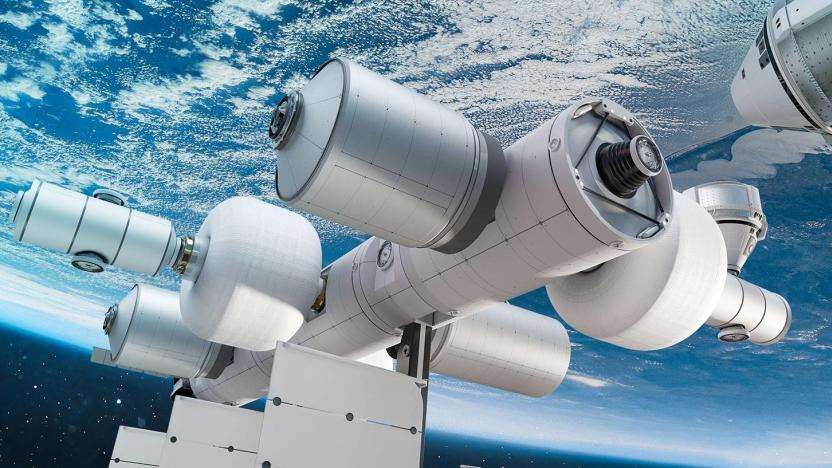
NASA backs Blue Origin’s Orbital Reef space station
NASA announced a round of funding to both Blue Origin and Northrop Grumman to design a private enterprise replacement for the ISS.
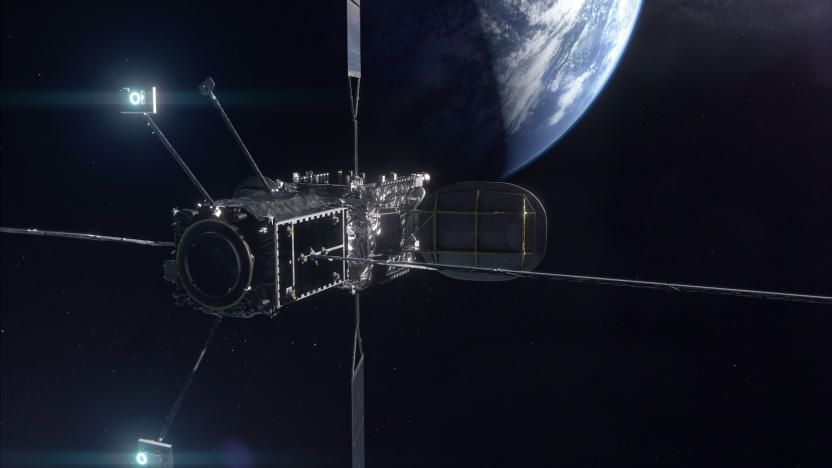
Northrop's servicing robot extends the life of an orbiting satellite by five years
Northrop Grumman's Mission Extension Vehicle-2 clamped onto Intelsat's IS-10-02 communications satellite and extended its lifespan by five years.
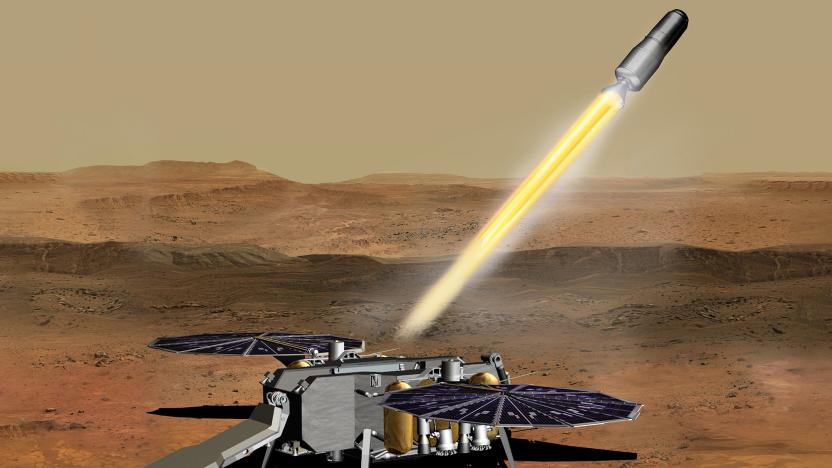
NASA awards key contract to bring rock samples back from Mars
NASA has taken a big step in the Mars Sample Return mission, awarding the Mars Ascent Propulsion System (MAPS) contract to longtime NASA contractor Northrup Grumman Systems.
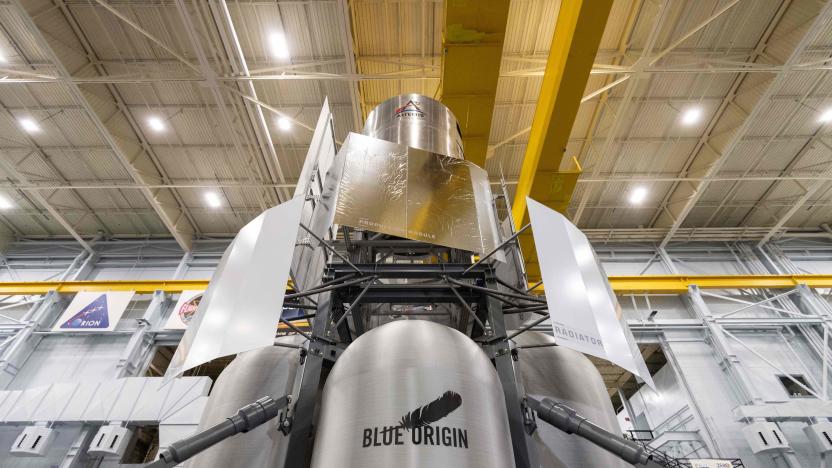
Blue Origin's lunar lander mockup is ready for NASA simulations
Blue Origin and its “National Team” partners Lockheed Martin, Northrop Grumman and Draper have delivered their full scale lunar lander mock-up to NASA. The space agency will use the engineering prototype to simulate how it could get “crew, equipment, supplies and samples off and on the vehicle” in future moon missions.
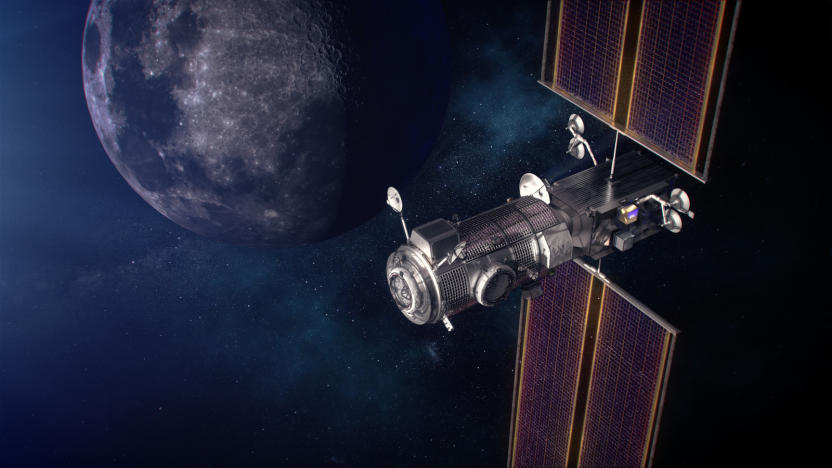
NASA orders Lunar Gateway's crew cabin from Northrop Grumman
The space agency has awarded Northrup Grumman a $187 million contract to design the Gateway’s habitation and logistics outpost (HALO). The HALO cabin will be the size of small studio apartment and provide life support for spacefarers in tandem with NASA’s Orion spacecraft.

Blue Origin teams with spaceflight veterans to complete its lunar lander
Blue Origin won't be alone in working on a crewed lunar lander that will (hopefully) participate in NASA's Artemis program. Jeff Bezos' outfit has unveiled a trio of partners that will help it complete the Human Landing System, all of which are space industry veterans. Lockheed Martin will work on the reusable Ascent Element vehicle as well as lead crewed flight ops. Northrop Grumman, meanwhile, will produce the Transfer Element that brings the landing system toward the Moon. Draper, in turn, will handle descent guidance and avionics.
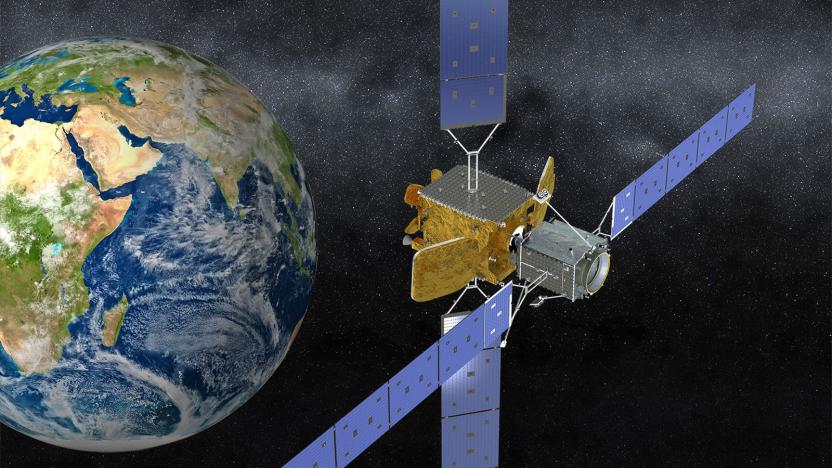
Northrop's satellite life extension spacecraft launches on October 9th (updated)
Space junk is hard to completely avoid when satellites can only last so long, but that might not be a problem for much longer. Northrop Grumman and NASA are launching a "first-of-its-kind" service vessel, the Mission Extension Vehicle, aboard a Russian rocket on October 9th. The inaugural MEV-1 will dock with an Intelsat satellite in three months' time and provide life-extending services over five years. After that, it should be free to help other satellites -- it'll still have 10 years' worth of use after that.

US Navy's next-gen helicopter drone is ready for service
It took a few years, but the US Navy's beefier Fire Scout helicopter drone is finally ready for action... more or less. The military branch has declared that Northrop Grumman's MQ-8C has reached "initial operational capability," or the minimum state it needs to enter service. The new, Bell 407-based variant is considerably larger than its 8B predecessor, but it's also more capable. The 8C can last roughly twice as long in the air at 12 hours on station, and carry roughly three times the payload -- 701lbs, to be exact. It also packs new radar with a larger field of view and more modes, including air-to-air targeting.

SpaceX sues over 'wrongly awarded' Air Force rocket contracts
To say that SpaceX was unhappy with losing out on the US Air Force's rocket development contracts would be an understatement. The company has sued the US government under claims that the Air Force "wrongly awarded" contracts to Blue Origin, Northrop Grumman and United Launch Alliance. The military branch handed out offers to the competition despite their "unproven rockets" and "unstated metrics," while allegedly ignoring SpaceX's own real-world record. The company had completed numerous missions with its Falcon rockets, according to the lawsuit, but was deemed "highest risk" because of its largely untested Starship.
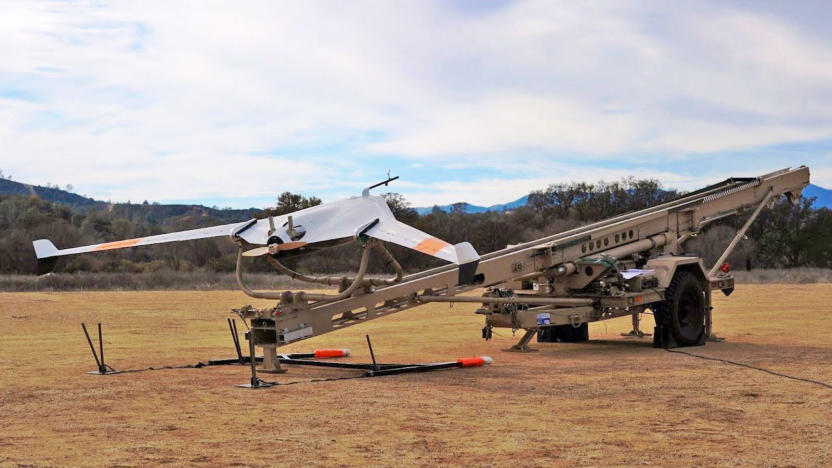
Who needs runways when you've got the Lockheed Fury?
Soldiers on the battlefield could soon have an extra set of eyes watching over them. Lockheed is currently developing a high altitude, long endurance (HALE) unmanned aerial vehicle called the Fury. But unlike other HALE platforms like Boeing's Phantom Eye or Northrop Grumman's Global Hawk, the Fury has no use for runways. It just needs a catapult.

Marine Corps finally declares the F-35B ready for combat
After years of testing and development, production setbacks and cost overruns and more than half a trillion dollars invested, the F-35B fighter jet has finally passed its biggest milestone to date: it's achieved initial operational capability (IOC) within the US Marine Corps. That means that the F-35B can now be deployed around the world and employed in active combat.

US Navy's Triton UAV completes first cross-country flight
While Triton -- the US Navy's largest unmanned craft -- might have no one in the cockpit, it still requires a hefty ground team to keep it (safely) in the air. Never more so than on a recently completed cross-country flight. Back in March, the Northrop Grumman craft completed initial flight testing, but this 11-hour 3,290 nautical mile flight is the most intensive testing yet -- bringing it ever closer to the estimated 2017 delivery into operational Naval fleets. Triton's route took it from from Northrop Grumman's Palmdale, California base along the southern US border, before a successful landing at Naval Air Station Patuxent River. Triton spends most of its time at around 50,000 feet -- well above domestic flights -- but has sensors that allow it to safely descend through cloud layers for closer observation of enemy ships as needed. Watch Triton pull off its silky smooth landing after the break -- human pilots take note!

Northrop Grumman's MQ-4C Triton long-range drone completes first flight (video)
Northrop Grumman's MQ-4C Triton unmanned aircraft is one step closer to serving the Navy in reconnaissance and surveillance missions, having just completed its first flight. The drone spent 80 minutes in the air, reaching an altitude of 20,000 feet. That's child's play compared to the aircraft's full potential: according to the Navy, it can soar at up to 60,000 feet and stay airborne for as long as 30 hours, due in no small part to its 130-foot wingspan. By 2015, the Triton will undergo operational testing and evaluation, and the Navy hopes to add additional aircraft to its existing fleet (currently just two strong). Check out the long-range spy plane in action just past the break.

US Army's LEMV spy blimp spotted hovering over New Jersey, may take up cargo duties (video)
The US Army's not-so-secret Long Endurance Multi-Intelligence Vehicle (LEMV) spy blimp is better at staying hidden than we thought... if unintentionally. Although it was due to fly the friendly skies of Lakehurst, New Jersey in mid-June, Northrop Grumman's usually unmanned surveillance was only just caught floating over the Jersey Shore as part of a maiden flight on August 8th. The conspicuous, delayed test run proved that the LEMV could take off, steer and land smoothly, and started a series of exercises that should culminate in combat trials over Afghanistan at the start of 2013. Northrop's KC Brown Jr. tells Wired that there's a possible (if purely coincidental) consolation for missing another deadline -- the airship could be used in a pinch for carrying as much as seven tons of supplies without getting into harm's way, albeit at a fairly glacial 30MPH. The successful first flight won't be much consolation to Mav6, whose Blue Devil 2 was scuttled at the last minute after technical issues; it's nonetheless a relief for US troops, who may get weeks at a time of constant intelligence on enemy movements. Catch a short snippet of the early LEMV journey after the break.

Northrop Grumman Unveils US Navy's MQ-4C BAMS Triton unmanned aircraft
If Broad Area Maritime Surveillance, or war gadgets are your bag, then things just got real. Northrop Grumman has just unveiled the MQ-4C BAMS Triton, the latest addition to the US Navy's Maritime Patrol and Reconnaissance Force. The spy plane was more than four years in development, has a wingspan of 130.9 feet, and is able to cover more than 2.7 million square miles in a single mission. As you will have been unable to avoid noticing, the unmanned aircraft definitely inherited some of the RQ-4 Global Hawk's dome-like DNA, and will edge towards active service after completing functional requirement reviews and system development and demonstration flights. Want to bone-up on the full spec? Hit the more coverage link for the numbers. In the meantime, we're wondering if they might extend the research.

Army spy blimp to launch within weeks: 300 feet long, $500 million, 'multi-intelligent'
It can't go faster than 34MPH and it's already a year late for its planned deployment in Afghanistan, but Northrop Grumman's Long Endurance Multi-Intelligence Vehicle (LEMV) is now set for its maiden flight. The test run is scheduled for sometime between June 6th and 10th over Lakehurst, New Jersey, whose residents ought to be forewarned that it is not a solar eclipse or a Death Star, but simply a helium-filled pilotless reconnaissance and communications airship that happens to be the size of a football field. After floating around for a while, the giant dirigible is expected to journey south to Florida, where it'll be fitted to a custom-built gondola that will carry the bulk of its equipment, and by which time her enemies hopefully won't have come into possession of an air force.

Scaled Composites and Northrop Grumman's new Firebird spy plane: pilot optional
Scaled Composites is best known for creating commercial spaceships for Sir Richard Branson, but it turns out the firm can construct more conventional flying machines, too. The company has joined forces with Northrop Grumman to build the Firebird, a flexible new plane that's a veritable surveillance Swiss Army knife. Part Predator UAV and part traditional aircraft, the Firebird can take to the skies with or without a human at the controls as it combs the earth for enemies of the state. What's more, the airframe's HD video and infrared cameras, radar, and communications gear in the fuselage are able to gather info simultaneously to find the bad guys, and those payloads are easily swapped for other equipment through a universal interface. It's scheduled to strut its intelligence-gathering stuff during a military exercise in a couple weeks, and if all goes according to plan, it'll become another terrorist tracking tool in the U.S. arsenal. Video of the brand new bird in action is after the break.

US satellites successfully track ballistic missile from cradle to grave, don't pay for the flowers
Lasers destroy missiles, missiles shoot down satellites, and soon, satellites may tell both where to aim, as the United States successfully managed to track an entire ballistic missile launch from "birth-to-death" with its prototype Space Tracking and Surveillance System. After a year and a half in orbit, two Northrop Grumman-built satellites managed the feat last week, in what the company's calling "the Holy Grail for missile defense." While we're not reading about any plans to mount any lasers on the satellite's... ahem... heads, Space News reports that the US Navy will attempt to relay the satellite tracking data to its Aegis ships with interceptor missiles on board, and hopefully obliterate incoming projectiles with the extra range and reaction time that satellite coordinates afford. The Navy has reportedly scheduled its first game of space-based Missile Command for next month.







